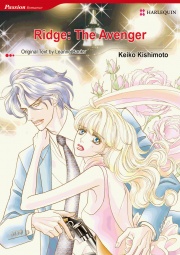Black Blizzard by Yoshihiro Tatsumi
I haven’t read Tatsumi’s critically acclaimed The Push Man or A Drifting Life, so I’m probably starting at the wrong place by reading the earlier Black Blizzard. This manga has a pulpy appeal and when you consider that it was produced in the 1950s when the author was 21, it is pretty amazing.
Black Blizzard opens with a piano player frantically practicing. His fingers are jittery and drops of sweat are flying off him. A man in a fedora and trenchcoat enters the room. The piano player is expecting him. He collapses on the piano, saying “I killed someone, but it can’t be…it can’t be true!” The story picks up again with a train moving through a desolate winter landscape. The piano player is now handcuffed to a hardened criminal. There’s a crash, and the criminal takes the opportunity to escape, dragging the hapless musician along with him. They move through a blizzard trying to evade capture and take refuge in a desolate cabin together. The criminal is keen on sawing the musician’s hand off so the duo can separate, but the piano player objects. He starts telling the sad story of how he wound up handcuffed to a murderer, beginning with his involvement with a circus girl with a lovely voice. The escaped prisoners grow more frantic to detach from each other, leading to a surprising bargain and a plot twist that requires a healthy tolerance for contrived endings.
Tatsumi’s art style is sparse and dynamic. The characters are rendered with just a few effective lines for their facial expressions. The blizzard is depicted with slashing diagonal lines, making it easy to picture the horrible winds that buffet the escaped prisoners. Tatsumi relies on some straightforward square and rectangular grids but he varies his perspective often for effect – focusing on a face, a broken glass, and the snow building up on a deserted building. The production by Drawn and Quarterly plays up Black Blizzard’s pulpy heritage. The pages are tipped in yellow, and the jacket copy imitates the text you’d see on an old noir paperback. This manga is flipped, which I adjusted to ok. What I found distracting was the way the sound effects were handled. In some places the sound effects are left in the Japanese, with a note providing translation but on most pages the sound effects are translated. The original sound effects just looked so much more stylish on the page even though the translated effects mimicked the same style.
This wintery crime manga was a perfect thing to read on a hot summer night. The ending of the manga wrapped up things a bit too nicely, but I put the book down amazed that this was the work of such a young creator. There’s an interesting interview with Tatsumi in the back of the book that provides some background on the creation of the book. It was interesting to hear that single volume manga like Black Blizzard was produced for the rental book market in 1950s Japan.
